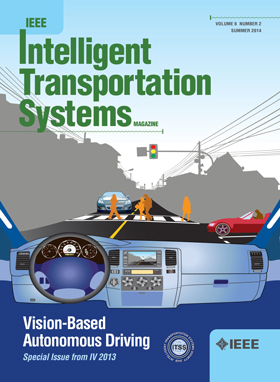基于联邦学习的V2X通信资源分配
IF 7.9
1区 工程技术
Q1 ENGINEERING, CIVIL
IEEE Transactions on Intelligent Transportation Systems
Pub Date : 2024-11-27
DOI:10.1109/TITS.2024.3500004
引用次数: 0
摘要
在联邦学习(FL)中,设备通过仅上传局部模型梯度(结果)来促进全局训练,从而为连接的设备提供在保护隐私的同时学习的能力。提出了基于fl的V2X通信资源分配,简称FL-RA-V2X,在最大功率和信噪比(SINR)约束下,优化和最大化所有车辆用户的吞吐量。它保证了资源分配的公平性,满足蜂窝用户的最小信噪比要求和车辆用户的中断概率约束。推导了车辆用户吞吐量的近似表达式,通过对辅助变量的迭代计算,消除了SINR表达式的非凸性。资源分配被设计为允许每个车辆用户与蜂窝用户共享上行资源,最大化车辆用户数量,同时利用其最大功率传输能力。仿真结果表明,从车辆停运率、计算复杂度、计算时间、最大传输功率、可实现和速率的累积分布函数和收敛指标等方面考虑,与现有算法相比,该方法具有公平性和更高的吞吐量效率。此外,该方法还解决了一些关键问题,包括高移动性和分布式V2V通信、蜂窝V2X网络中的异步训练问题,以及不同条件下(如不同车辆密度和移动性模式)的收敛分析。这些考虑因素扩大了FL-RA-V2X方法在不同场景中的适用性和鲁棒性。分析还探讨了车辆速度、辅助变量、蜂窝用户的干扰效应以及吞吐量对FL迭代的依赖性的影响。本文章由计算机程序翻译,如有差异,请以英文原文为准。
Federated Learning-Based Resource Allocation for V2X Communications
In federated learning (FL), devices contribute to global training by uploading only the local model gradients (outcomes), providing connected devices with the ability to learn while preserving privacy. FL-based resource allocation for V2X communications is proposed, referred to as FL-RA-V2X, which optimizes and maximizes the throughput of all vehicle users within the constraints of maximum power and the signal-to-interference-plus-noise ratio (SINR). It ensures fairness in resource allocation, meeting the minimum SINR requirements for cellular users and outage probability constraints for vehicle users. An approximate expression for vehicle users’ throughput is derived, eliminating the non-convexity associated with the SINR expression through iterative calculations of auxiliary variables. The resource allocation is designed to allow each vehicle user to share uplink resources with cellular users, maximizing the number of vehicle users while utilizing their maximum power transmission capability. Simulation results demonstrate the fairness and enhanced throughput efficiency of the proposed approach compared to contemporary algorithms, considering vehicle outage ratio, computational complexity, computing time, maximum transmitting power, cumulative distribution function of achievable sum rates, and convergence metrics. Furthermore, the proposed approach addresses critical aspects, including high mobility and distributed V2V communications, asynchronous training issues in cellular V2X networks, and the convergence analysis under different conditions such as varied vehicle densities and mobility patterns. These considerations broaden the applicability and robustness of the FL-RA-V2X method across diverse scenarios. The analysis also explores the impact of vehicle speed, auxiliary variables, interference effects of cellular users, and the dependence of throughput on FL iterations.
求助全文
通过发布文献求助,成功后即可免费获取论文全文。
去求助
来源期刊

IEEE Transactions on Intelligent Transportation Systems
工程技术-工程:电子与电气
CiteScore
14.80
自引率
12.90%
发文量
1872
审稿时长
7.5 months
期刊介绍:
The theoretical, experimental and operational aspects of electrical and electronics engineering and information technologies as applied to Intelligent Transportation Systems (ITS). Intelligent Transportation Systems are defined as those systems utilizing synergistic technologies and systems engineering concepts to develop and improve transportation systems of all kinds. The scope of this interdisciplinary activity includes the promotion, consolidation and coordination of ITS technical activities among IEEE entities, and providing a focus for cooperative activities, both internally and externally.
 求助内容:
求助内容: 应助结果提醒方式:
应助结果提醒方式:


